In Silicon Valley, even mobile homes are getting too pricey for longtime residents
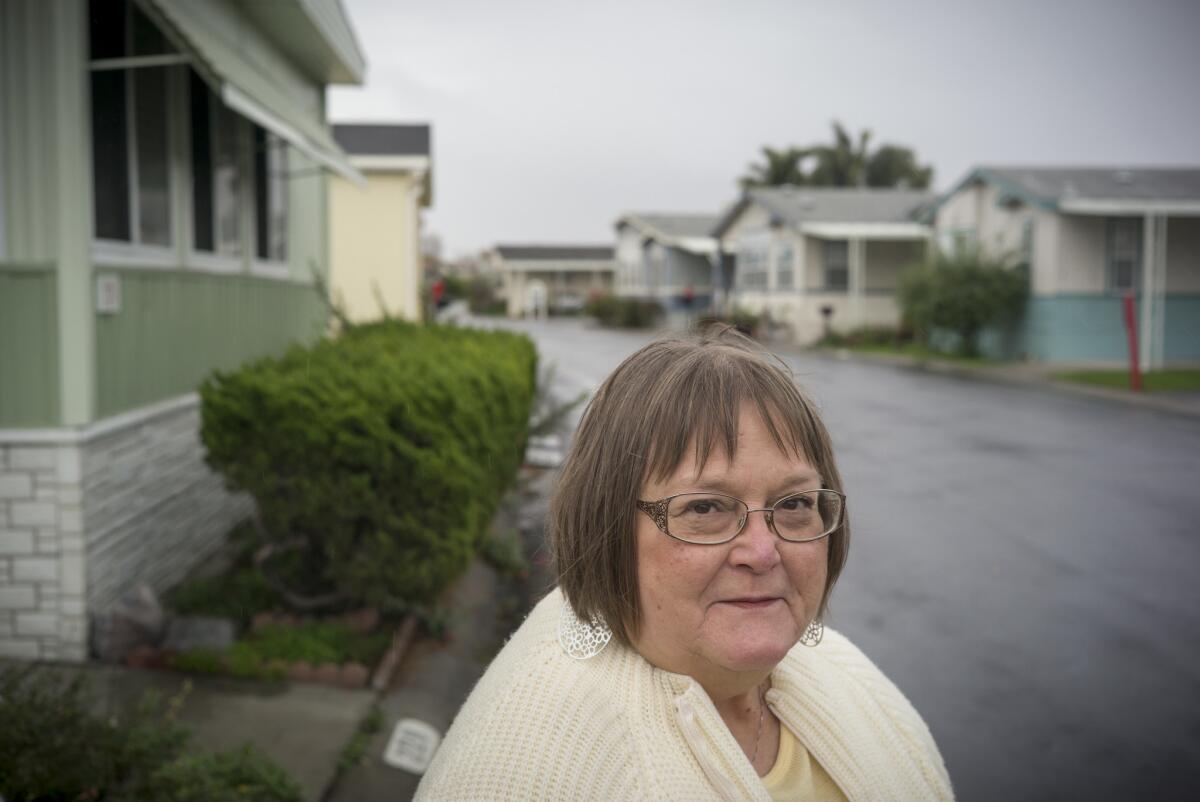

During the last week of March, Apple reached a record market value of $754 billion,
At a recycling rate of 5 to 10 cents a bottle, the 70-year-old’s attempt to raise $10,000 to campaign for a rent control measure seemed like a long shot. But living in the heart of Silicon Valley — where rents keep soaring, outside interests are encroaching and protections for renters are scant — what else was she going to do?
“People are looking for somebody to save them, and they’re not looking to themselves,” said Pavlick, a retiree who has lived in the Plaza del Rey mobile home park since 1989.
The mobile home park sits on more than 65 acres of some of California’s hottest real estate. Its 800 tidy modular homes are less than two miles from the campuses of Apple, Google, Yahoo and LinkedIn. One of the world’s largest private equity firms, the Carlyle Group, bought the land two years ago for $151.1 million. And in its first year owning the park, it increased space rents (the amount that homeowners pay to lease land) by 7.5% — the largest in Plaza del Rey’s 47-year history.
Pavlick knows how this goes. She’s not going to wait to be priced out. She’s rallying her neighbors: Plastics. Cans. Put ‘em out, now.
To live in the Bay Area is to face skyrocketing rents, threats of displacement and evictions. It’s to hear about techies moving in, to hear about even techies being priced out. It’s to watch glistening tech campuses go up as the gulf between those who make the tech and those who just happen to be here widens.
“When people think Silicon Valley, they think ‘pot of gold,’ ” said Dorothy Niblock, 90, a Plaza del Rey resident who lives alone in the two-bedroom mobile home she designed with her late husband 44 years ago. “That doesn’t really apply to us.”

Most of Sunnyvale’s dozen or so mobile home parks started as retirement communities, and nearly half remain that way. Plaza del Rey is now a family park, but its retirement roots linger: Seniors make up the bulk of its population.
Its monthly newsletter includes a calendar of activities such as Mahjong Tuesdays, Bridge Club Wednesdays and exercise groups four days a week. On Valentine’s Day, there was a spaghetti dinner in the main clubhouse. On St. Patrick’s Day, it was corned beef and cabbage. “Please bring your own plates and utensils,” the flier read. “We will be serving water, but feel free to BYOB!”
Many longtime residents have never thought of themselves as part of the Silicon Valley story. But sometimes, you don’t get to choose.
The most recent tech boom created staggering job growth in the region, with real estate brokers estimating that firms such as Google and Apple now occupy around nine times the amount of land they did in 2005. The expansion of companies such as Facebook, LinkedIn and
One-bedroom homes in the Sunnyvale area have gone from a median selling price of $205,000 in 2012 to more than $445,000 in 2017. Apartments have over the last four years seen double-digit rent increases. Teachers have been priced out of the school districts where they teach. Even lawyers have left the region in a huff. And as investors still keen to park their money in Silicon Valley look for ways to squeeze value out of what’s already there, no property is getting a free pass — not even mobile home parks.
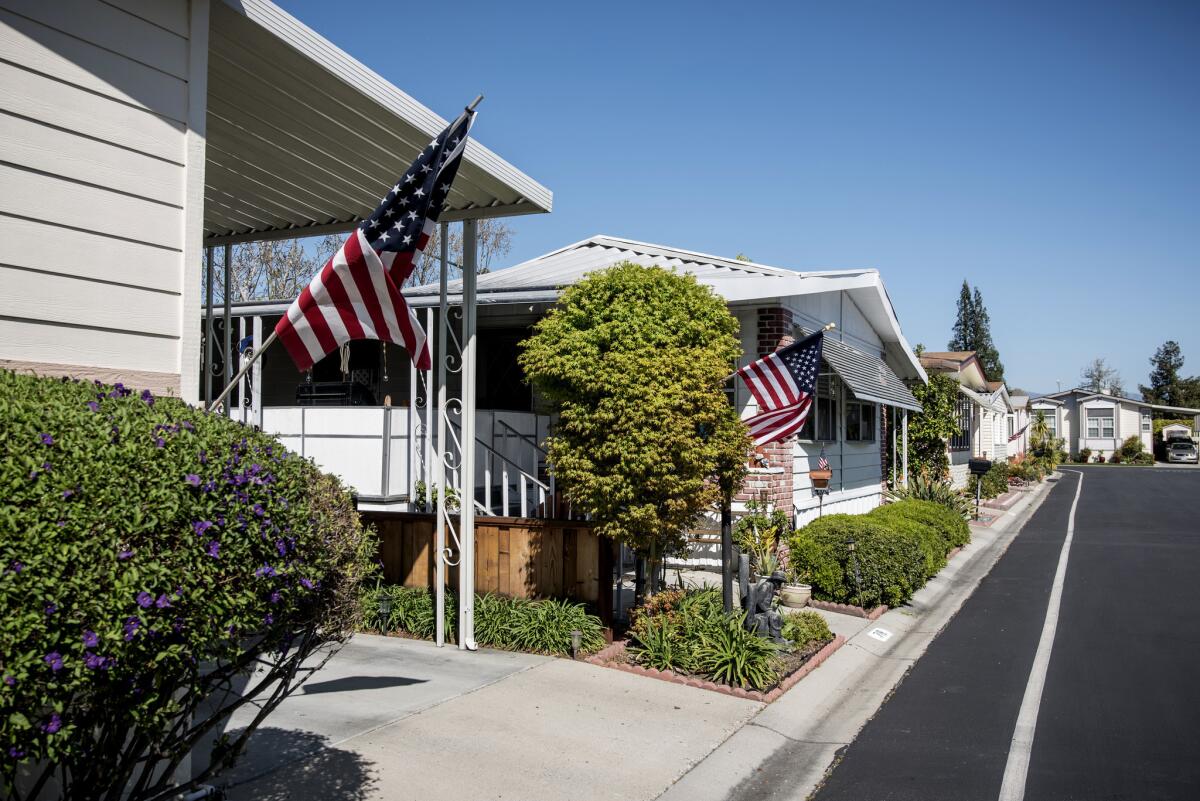
On her first day driving around the park, Pavlick collected 10 bags of bottles and cans. Total Value: $40.
“Next Thursday, how about 20 donations?” she wrote to Plaza del Rey’s Nextdoor community forum.
It costs only $200 to file the initial paperwork to get a measure on the ballot in Sunnyvale. But getting a ballot measure passed is more expensive and difficult, said Juliet Brodie, an attorney who represented the Mountain View Tenants Coalition in its successful push for rent control last year.
Proponents have to publish a notice of intent in local newspapers, get the ballot measure written, gather signatures of at least 10% of the city’s eligible voters and win a majority of votes. Printing costs alone can push costs into the thousands of dollars.
“You can’t just take a notepad and get signatures,” Brodie said.
When Pavlick bought her home in 1989, she paid $65,000 plus $356 in monthly space rent, which also included water, garbage, sewage and cable. She was a business systems analyst, working for companies such as Memorex and Genentech. The park was close to her job, and its affordability meant that she could get a two-bedroom, allowing her to care for her late mother, who had Alzheimer’s disease.
The original owners kept Plaza del Rey in the family for more than four decades until granddaughter Shereen Caswell sold it to Carlyle in 2015 (Caswell could not be reached for comment).
Today, Pavlick pays $1,004 for space rent, the result of incremental rent increases over nearly 30 years. Residents now cover the cost of all utilities, in addition to personal property taxes and the cost of maintaining their homes, patios and yards. On top of doubling the space rent increase in 2016 from previous years (residents have long paid increases of 3% to 4% a year, comparable to neighboring parks), Carlyle raised the space rents for new residents to $1,600, nearly 40% more than the park average.
Earlier this year the firm offered residents a five-year lease that would cap rent increases at 4% a year, but only if they also agreed to sign a contract that would give Carlyle the right to make the first bid if a homeowner decided to sell. Carlyle declined to comment on the rent increases or its plans for the park after the five-year period is up. As of May, around 70% of residents have signed the lease. Those who have not signed might see rents increase to market value — Carlyle declined to define what this would be.
Mobile home owners face a “double whammy,” according to housing lawyers, because unlike traditional homeowners, they don’t own the land beneath their houses. That means they can’t expect a windfall when they sell. Newer, larger mobile homes can go for as much as $400,000, according to local Realtors, but older homes in the park can sell for as little as $120,000. Recent space rent increases have hurt homeowners looking to sell because Realtors estimate that for every $100 increase in space rent, a home loses $10,000 in value.
And unlike renters, who can easily up and leave, mobile home owners are saddled with a house that is, despite the name, difficult to move. Some homes exceed 1,800 square feet, with multiple bedrooms and bathrooms. Many are brought into the park in pieces and built on site. Taking apart and transporting a mobile home can cost tens of thousands of dollars. Putting one back together can cost even more. And once a home has been uprooted, homeowners have to find a new space for it.
“Just move, just move,” said Pavlick, mimicking those who believe that the solution to her problem is to leave. “Move where?”
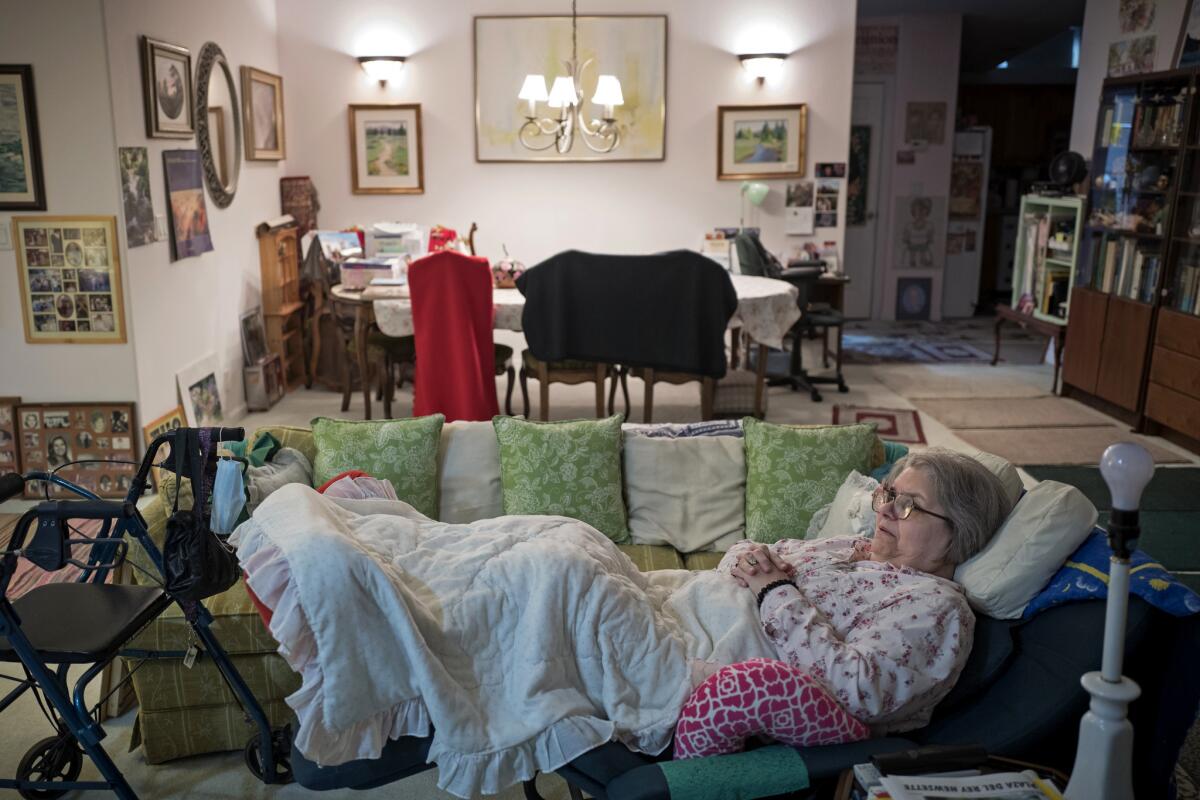
Mobile home parks have traditionally been mom-and-pop operations. But as the value of land in Silicon Valley soars, a growing number of institutional investors have been eyeing its undervalued lots.
That includes private equity firms. Private equity investors typically snatch up struggling or undervalued businesses and find ways to increase their value — either by investing resources to beef up the business or cutting costs to improve the bottom line — then reselling them at a profit.
Carlyle spokesman Randall Whitestone told the Los Angeles Times that the publicly traded Washington, D.C., firm, which has $162 billion in assets under management across industries such as healthcare, aerospace, real estate and financial services, has been buying up mobile home parks because they’re “less volatile than many other asset classes.”
“We like to buy in locations where there are good supply-demand fundamentals and economic strength,” Whitestone said.
Because of zoning rules, there is little chance that Plaza del Rey will one day become a tech campus. But there are other ways to raise the value of the park.
Investors can upgrade a park before they sell it. Although Carlyle declined to comment on its long-term plans for the park, Whitestone said it has “made significant capital investments to materially improve the property for residents.”
Another way is to increase the rent.
Plaza del Rey is, to the dismay of many longtime residents, an ideal investment for Carlyle. In a place like Silicon Valley, where tech salaries are among the highest in the country and the housing market is among the most competitive, it won’t be hard to find someone willing to pay $1,600 or more for space rent. And according to private equity experts, it doesn’t matter to Carlyle who that someone might be.
“They won’t care if it’s seniors or young people,” said Erik Gordon, a professor at the University of Michigan’s Ross School of Business. “Their challenge is to turn something they bought for $100 million into something that’s worth $300 million. That’s the end game for a private equity fund.”
This gives Carlyle reason to fear rent control. Any caps to rent increases would not only limit the park’s near-term profitability but also potentially reduce its future resale value, which is where private equity firms make most of their profit.
And that’s why Carlyle sent its managing director of U.S. real restate, Dave Kingery, to a Sunnyvale City Council meeting in January to argue against rent control.
“We do not believe it furthers the objectives of the city, the residents or the owners in the long term,” Kingery said at the meeting.
The firm’s annual earnings reports spelled it out more plainly: Under the “risks” heading, which details all the things that could hurt Carlyle’s business, the tenth bullet point reads “changes in government regulations (such as rent control).”
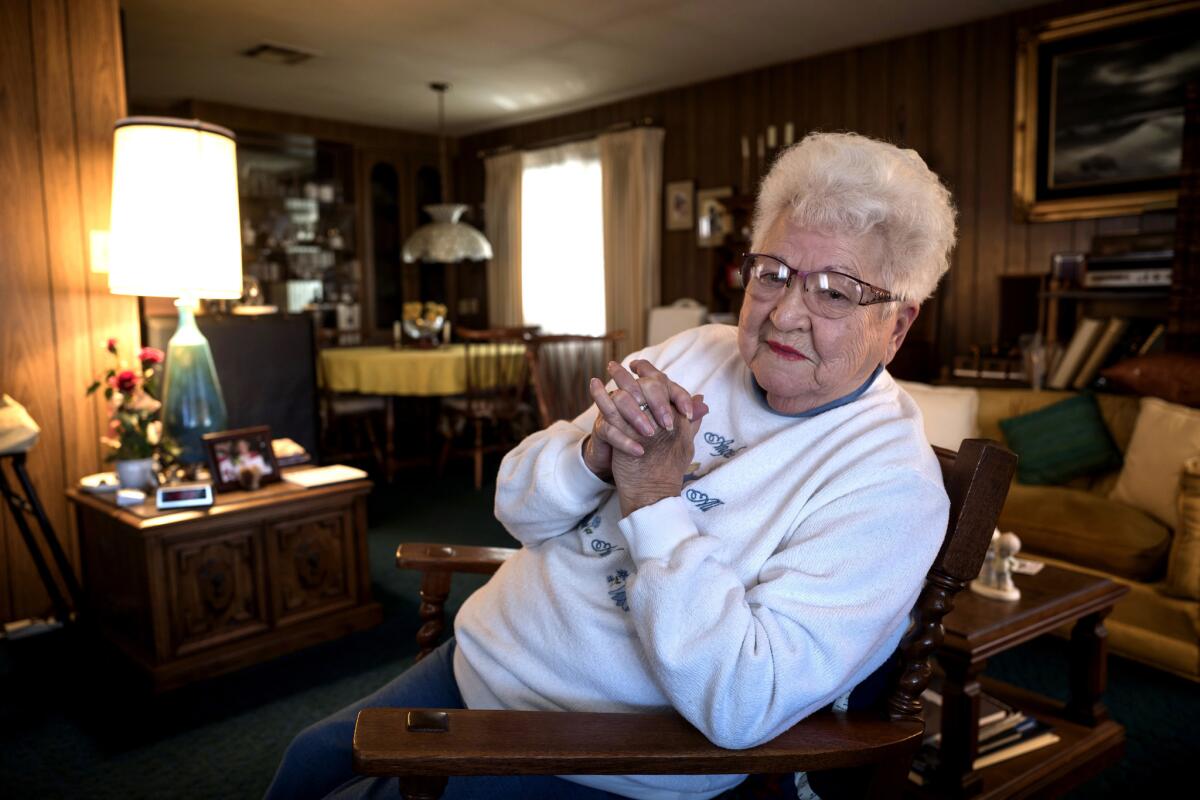
Depending on who you talk to, rent control either always works or it never works. It’s the answer to the housing affordability crisis. It’s the reason that homes are so expensive. It will deter developers from creating more housing stock. It will keep people in their homes. It has never solved a city’s problems. It’s the answer to residents’ prayers.
Although Silicon Valley communities have either resisted or been slow to develop new housing to accommodate the influx of workers the region has attracted over the years, Sunnyvale has one of the strongest track records in California when it comes to building affordable housing. About 10% of the units in its development pipeline are affordable housing units.
But it’s also one of the few cities in Silicon Valley that doesn’t have rent control, either citywide or specifically for mobile home parks, and its City Council has shown a reluctance to entertain the thorny issue.
“The problem I have is there are a lot of loopholes in rent control, and we’re going to have a lot of lawsuits the moment it goes through,” council member Michael Goldman said in an interview with The Times.
The neighboring city of Mountain View, which passed a voter-approved measure in November, was slapped with a lawsuit from the California Apartment Assn. seeking to block the measure from being enforced immediately after the election. A Santa Clara County judge in April denied the request for an injunction, clearing the way for the city to go ahead with its rent control rollout.
“This is a free country and anybody with a filing fee can file a lawsuit,” said Brodie, the attorney who helped Mountain View get rent control. “If we allow that to prevent us from making good policy, that’s just not reasonable.”
For housing advocates, rent control is good policy. For opponents, it’s a Band-Aid solution. Rents are high, they argue, not just because landlords can charge whatever they want, but because Silicon Valley became a global tech mecca faster than its cities could handle it. How do you solve that?
“There are no bad guys in all this,” Goldman said of Carlyle and Plaza del Rey. “When I see people saying ‘It’s really expensive for me,’ I say if you’re not working in high tech, which requires you to be here, why are you here? If you’re here, you’re making a decision every minute you’re here that the cost of being here is worth it.”
There are tech industry workers who live in Plaza del Rey — employees of Apple, Google, Oracle and local start-ups. They’re increasingly feeling the squeeze too.
Despite making a six-figure salary working in information technology, a traditional home was out of reach for Bay Area native Ron Van Scherpe, 45. Having a young family, he didn’t want to rent anymore. So he and his wife did what they thought was the next best thing: They bought a three-bedroom home in Plaza del Rey.
When they moved in 12 years ago, their combined mortgage and space rent was only $2,150. Today, it’s $2,600, which is still more affordable than the rent on a one-bedroom Sunnyvale apartment. But if the space rent keeps climbing, at some point they’ll be no different from renters.
“The tech industry is displacing the middle class,” said Van Scherpe, who has signed up to help Pavlick in her rent control effort. “We’re going to give it two years with this rent control issue, and if it doesn’t look promising, we’re going to have to relocate by the end of five years.”
He and his wife are considering Austin, Texas. He worries that it will be hard on his kids, though. Their grandparents live here.
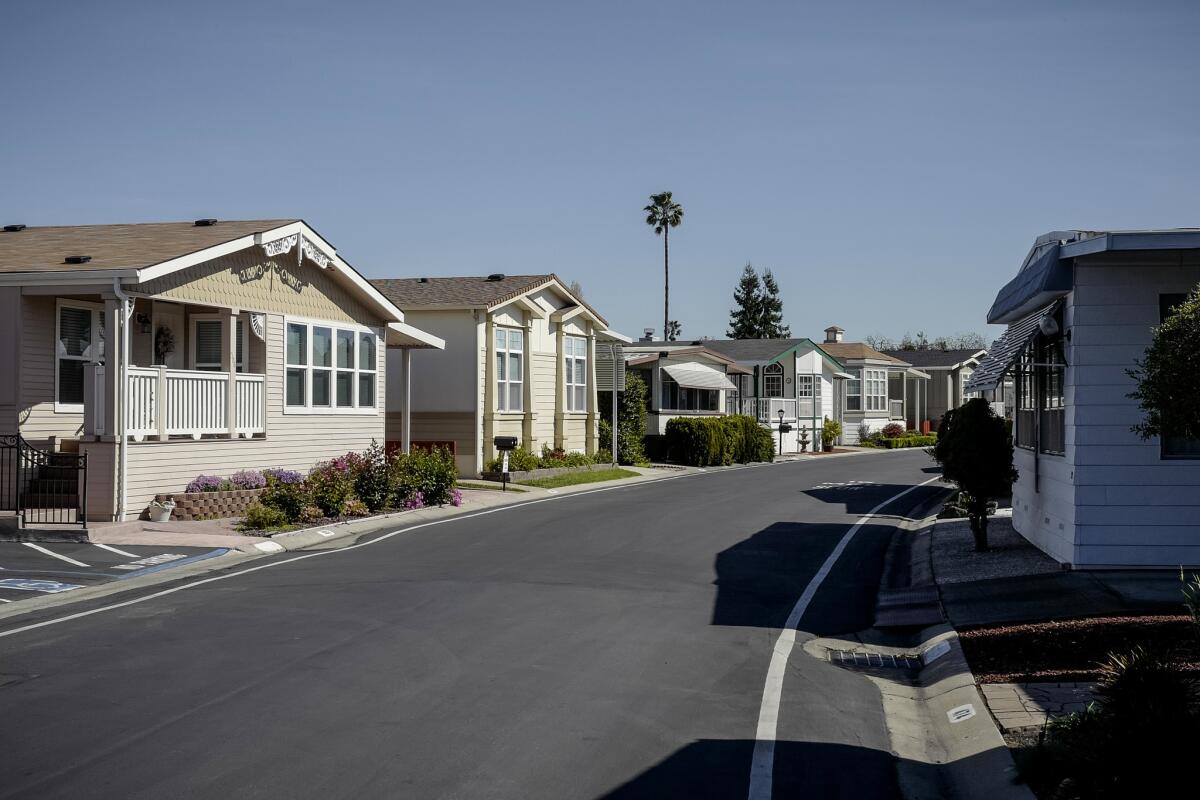
On a recent Thursday morning, Pavlick drove around Plaza del Rey with her neighbors Patrick and Karen Garcia picking up heavy glass bottles of Perrier and empty cans of Coca-Cola.
“Someone must have had a party,” Karen Garcia said.
At the recycling facility, they traded the goods for $46.55.
Pavlick frowned. “I thought we’d get more from those heavy bottles,” she said. “But it’s more than last week.”
“Enough to pay for a third of an hour with an attorney!” Garcia joked.
Pavlick did the math in her head. If Plaza del Rey averaged $40 in recycling a week, and the dozen or so mobile home parks in Sunnyvale also got involved and raised $40 a week, they could collectively raise everything they needed in less than six months.
She currently has around 115 people from Plaza del Rey and neighboring parks working with her. In the coming weeks she hopes that more people will put out their recycling, knock on doors and, eventually, campaign for rent control.
It’s a long shot: a few dozen mobile home park residents trying to stop a private equity firm from upending their lives. But Pavlick likes to say aloud: “Carlyle has the money, but we have the people.”
Now she just needs those people to knock on doors, push for rent control and fight for their future — one plastic bottle at a time.

Twitter: @traceylien
ALSO
Tons of $80,000 entry-level cybersecurity jobs are sitting empty
Apple has the means — and the motive — to pull off a massive acquisition
Venture capitalists look beyond tech to the dietary supplements market. Scientists express worry




